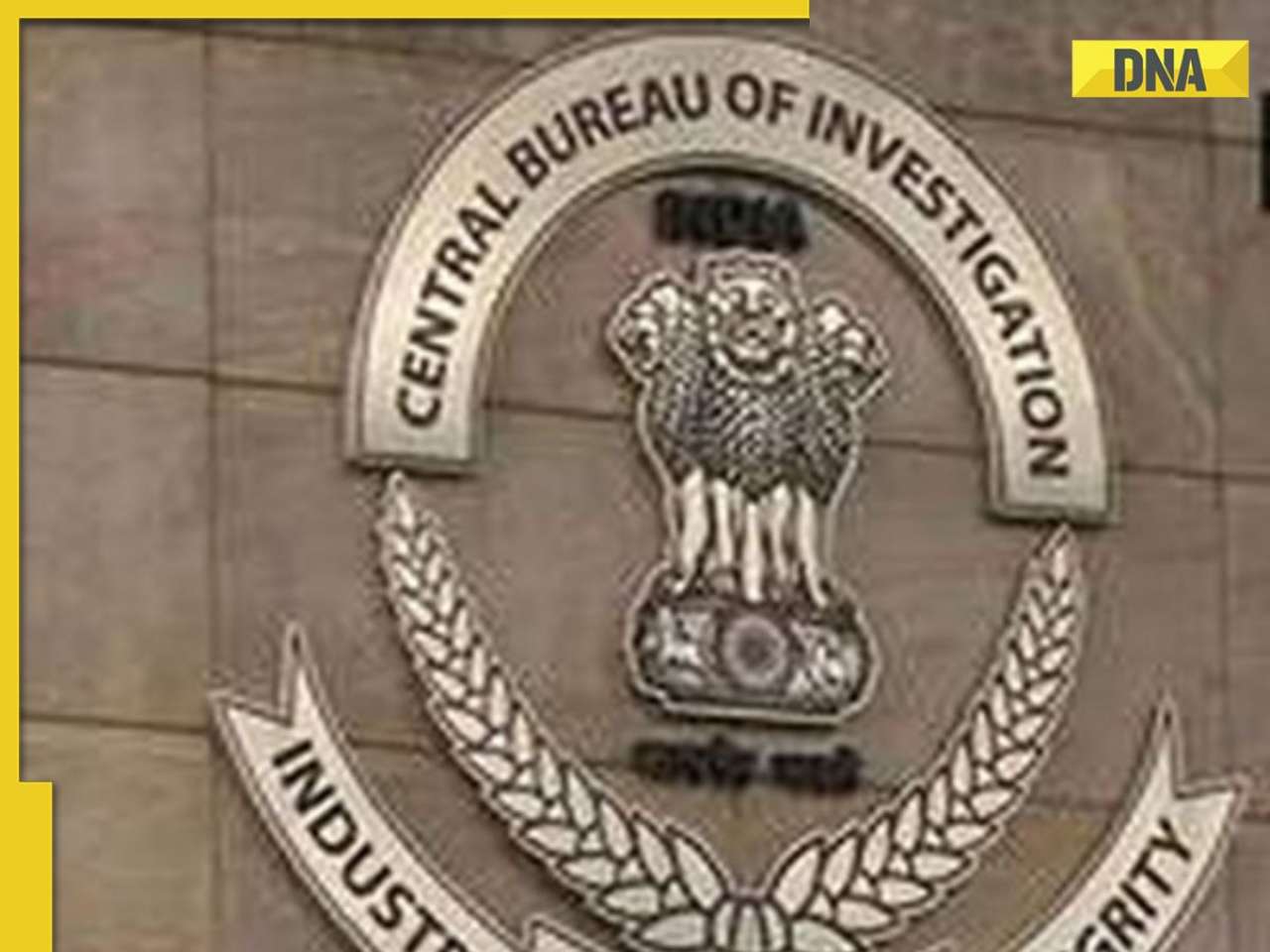Investors should take a holistic view of their portfolios before investing further.
On a high since 2006, the Indian property market descended in January 2008 and continues to remain unsteady. The BSE Realty index moved up by more than six times from January 31, 2006 to January 31, 2008 , but then it started declining and fell by 89% till mid-March 2009. On January 8, 2008, the Sensex was at its peak and plunged more than 60% till March 9, 2009.
Given the central bank’s farsightedness, the losses were capped. Interest rates began rising in late 2006 which ensured some rationalisation. However, the full blow of the global economic crisis emerged in mid 2008 when most real estate developers faced a huge liquidity crunch as buyers stayed on the sidelines, and semi-finished projects piled up.
The direct effect was on the listed price of these companies. In January 2008, the share price of DLF, the country’s biggest real estate company, was trading at Rs 1,207 which fell by 89% by February 2009.
Unitech which was trading at Rs 518.95 in January 2008 fell to Rs 23 in November 2008, marking a 95.54% fall. The fall in sales volume was so sharp that profits of almost all companies were eroded.
It was all well till the end of 2007 and realty majors such as DLF, Unitech and Emaar MGF were seeking to raise huge capital from domestic and overseas markets in 2008 to fund their massive expansion plans. But the plans changed within a few months when Emaar MGF had to withdraw its maiden public offer of over Rs 7,000 crore in February 2008 because of bad market conditions.
On seeing the fate of Emaar MGF’s IPO, many other realty firms decided not to try their luck in the capital market. The development was in complete contrast with 2007 when the sector emerged as one of the top fund-raisers with DLF leading the chart at over Rs 9,000 crore.
Almost all real estate developers have used the recent lifeline allowed by the Reserve Bank of India to restructure their loans as they are hit by slowing home sales and mounting debt. In February 2009, DLF refinanced about Rs 2,000 crore loans at a 12-13% interest rate out of the Rs 4,300 crore it needed to repay by June 2009.
With the V-shaped recovery in the equity market, the scenario has changed and the realty sector returns are once again looking impressive. We assess how mutual funds have reacted to this trend.
Exposure trends across asset management companies (AMCs)Equity mutual funds began investing in this sector in right earnest only in 2006; this shouldn’t come as a surprise to investors given that the BSE Realty index grew four-and-a-half times during 2006.
At the end of January 2006, barely 16 equity mutual fund schemes had a marginal exposure to realty companies. But by the end of May 2006, the number jumped up to 76 schemes, although the average exposure continued to look marginal. By the end of 2006, one in every two equity mutual funds had built a small exposure to at least one real estate company.
While the exposure levels kept growing, disaster struck in early 2008 and the BSE Realty index plunged 22% during January 2008 while Sensex lost only 13% by the end of January. As a result, cut backs in exposure levels soon followed, with the realty sector being amongst the worst hit.
At the same time, fund managers had not completely given up on the sector and during 2008 there was a clear build up in positions at every dip, followed by systematic profit-booking in the short rallies. However, it must be said that all these positions bore the stamp of caution, with the quantum of exposure being nowhere near its earlier levels.
Before February 2008, it was not unusual to find a scheme investing anywhere between 10% and 25% of its portfolio in realty companies; this has now been capped to under 5%. Fast forward to the present-day scenario where the BSE Realty has clocked a 94.23% rise (between 31 December 2008 and 10 September 2009) and the exposure levels are again up. By end of August 2009, 165 equity schemes had taken positions in the realty sector. Although, having learnt their lessons the hard way, management teams have ensured reasonable limits of exposure to the sector, with barely 11 schemes crossing the 5% mark.
There are clear trends visible across AMCs as well. Most AMCs have been cautious in the amount of funds invested. In addition to that, there clearly appears a limited list of approved companies within the sector where an AMC invests.
The most aggressive investor in the sector has been JM Mutual Fund while ICICI Prudential Mutual Fund, Fidelity Mutual Fund, Franklin Templeton Investments among others have mostly stayed away from the sector.
There have been two LIC schemes where extremely high exposure to realty scrips has been noticed, although this exposure has been over extremely small periods. At the same time, Principal MF limited its exposure to the sector only through its two tax-planning schemes.
Furthermore, the fund house cut back its positions in the sector drastically by middle of 2007 – a wise decision given the mayhem that soon followed. The same trend of timing its exit has been noticed with the schemes floated by Sundaram BNP Paribas.
In fact, given the high PE (price-earnings ratio – a commonly used measure to gauge the under- or over-pricing of a stock) at which most of these realty stocks traded at, it seemed only logical for fund management teams to take a back seat.
For instance, even after a large correction at the end of January 2008, the PE of the BSE Realty Index stood at 43 times, which compared with the 21.95 times of Sensex ought to have sent alarm bells ringing. Between September 2008 and March 2009, the PE of realty stocks came down drastically and was quoting at more realistic levels; however, since June 2009 it is back again at the top. As of August 31, 2009, the PE of BSE Realty is at 39 times compared with the 20.45 times quoted for the Sensex.
Some AMCs got their timing wrong. Sahara Mutual Fund stepped on the bandwagon rather late and it was only in October 2007 when it started building positions in this sector. However, a cautious approach by the AMC ensured that the exposure to the sector was within 5% of the portfolio.
DBS Chola Mutual Fund in fact took intermittent, concentrated bets. DSP BlackRock Mutual fund has over the past 18 months limited its exposure through select schemes to only six companies in the realty space.
The most courtedThe most courted company in this space in the initial years was Ansal Properties & Industries. While many would have expected Unitech to emerge as a top contender in the list, the scrip has not been as popular as DLF and Housing Development & Infrastructure Ltd. It was only towards the end of 2007 that the relatively higher exposure to Unitech was noticed. Some other popular scrips in this space have been Indiabulls Real Estate and Mahindra Lifespace.
The list of realty companies shrunk drastically by February 2009, with only five firms still present in the portfolios of equity mutual funds. While the number of realty companies appearing in equity mutual fund portfolios is still low, there has been an overall increase in the number of realty scrips courted by mutual funds.
No doubt that a lot of scope remains in the realty sector. However, the high volatility and overpricing of scrips is disturbing. A look at the standard deviation shows that the volatility in the BSE Realty is twice that of the Sensex.
The sector is still at a nascent stage with more structured means of valuation yet to develop. Investors need to take a holistic view of their portfolios and ascertain the net exposure to the sector before making further investment decisions.
![submenu-img]() Rohit Sharma: The True Epitome of Leadership in the Cricket World
Rohit Sharma: The True Epitome of Leadership in the Cricket World![submenu-img]() Nature's Powerhouse For Even Skin Tone: Blossom Kochhar Aroma Magic Introduces Anti-Pigmentation Glossy Pack
Nature's Powerhouse For Even Skin Tone: Blossom Kochhar Aroma Magic Introduces Anti-Pigmentation Glossy Pack![submenu-img]() Chef Vikas Khanna sends a special video to Rachana Shah and Rhythm Wagholikar
Chef Vikas Khanna sends a special video to Rachana Shah and Rhythm Wagholikar![submenu-img]() Meet world's richest actor, has only one hit, richer than Shah Rukh Khan, Tom Cruise, his net worth is of $1.4 billion
Meet world's richest actor, has only one hit, richer than Shah Rukh Khan, Tom Cruise, his net worth is of $1.4 billion![submenu-img]() Watch: West Indies spinner Zaida James gets hit on face during Women's T20 World Cup 2024 match
Watch: West Indies spinner Zaida James gets hit on face during Women's T20 World Cup 2024 match![submenu-img]() Haryana Assembly Election 2024 Live: सुबह 11 बजे तक हुई इतनी वोटिंग, अनिल विज ने किया बड़ा दावा
Haryana Assembly Election 2024 Live: सुबह 11 बजे तक हुई इतनी वोटिंग, अनिल विज ने किया बड़ा दावा![submenu-img]() Jammu & Kashmir: कुपवाड़ा में सुरक्षाबलों और आतंकियों के बीच मुठभेड़, 2 आतंकियों की मौत, घाटी में सेना का सर्च ऑपरेशन जारी
Jammu & Kashmir: कुपवाड़ा में सुरक्षाबलों और आतंकियों के बीच मुठभेड़, 2 आतंकियों की मौत, घाटी में सेना का सर्च ऑपरेशन जारी![submenu-img]() Jitan Ram Manjhi ने लालू यादव पर साधा निशाना, 'आपने चूहा खाना छोड़ दिया...'
Jitan Ram Manjhi ने लालू यादव पर साधा निशाना, 'आपने चूहा खाना छोड़ दिया...'![submenu-img]() Israel Iran Conflict: ईरान ने की भारत से फरियाद, इजरायल को युद्ध रोकने के लिए मनाने की लगाई गुहार
Israel Iran Conflict: ईरान ने की भारत से फरियाद, इजरायल को युद्ध रोकने के लिए मनाने की लगाई गुहार![submenu-img]() Terror Funding पर NIA का ताबड़तोड़ एक्शन, 5 राज्यों में 22 ठिकानों पर छापे
Terror Funding पर NIA का ताबड़तोड़ एक्शन, 5 राज्यों में 22 ठिकानों पर छापे![submenu-img]() This company overtakes Ratan Tata's firm to become India’s…; it is owned by…
This company overtakes Ratan Tata's firm to become India’s…; it is owned by…![submenu-img]() Mahindra Thar ROXX booking to start from..., check waiting period, details
Mahindra Thar ROXX booking to start from..., check waiting period, details![submenu-img]() BMW launches CE 02 electric scooter in India; price starts at Rs…
BMW launches CE 02 electric scooter in India; price starts at Rs…![submenu-img]() Mahindra Thar Roxx 4x4 prices revealed, starts at Rs…
Mahindra Thar Roxx 4x4 prices revealed, starts at Rs…![submenu-img]() Sebi gives nod to Hyundai India's Rs 20,000 crore IPO, listing month is...
Sebi gives nod to Hyundai India's Rs 20,000 crore IPO, listing month is...![submenu-img]() Meet woman who begged in childhood, became doctor after 20 years of struggle, now she is...
Meet woman who begged in childhood, became doctor after 20 years of struggle, now she is...![submenu-img]() Meet man, who left govt job as Assistant Excise Officer, used to get Rs 50000000, now works as...
Meet man, who left govt job as Assistant Excise Officer, used to get Rs 50000000, now works as...![submenu-img]() This engineer lands Google job, gets record-breaking offer, not from IIT, NIT
This engineer lands Google job, gets record-breaking offer, not from IIT, NIT![submenu-img]() Haryana schools to remain closed for two days due to elections; check dates here
Haryana schools to remain closed for two days due to elections; check dates here![submenu-img]() Meet man, who bagged AIR 1 in JEE Advance, studied at IIT Bombay, now pursuing PhD at prestigious college in...
Meet man, who bagged AIR 1 in JEE Advance, studied at IIT Bombay, now pursuing PhD at prestigious college in...![submenu-img]() After Hassan Nasrallah's Death, This Cleric Is Now Tipped To Be Hezbollah Leader | Israel | Lebanon
After Hassan Nasrallah's Death, This Cleric Is Now Tipped To Be Hezbollah Leader | Israel | Lebanon![submenu-img]() Hashem Safieddine, Cousin Of Hassan Nasrallah To Become Hezbollah's New Chief | Israel-Lebanon War
Hashem Safieddine, Cousin Of Hassan Nasrallah To Become Hezbollah's New Chief | Israel-Lebanon War![submenu-img]() Israel Hezbollah War: Nasrallah's Death, A Turning Point for Hezbollah's Future? Experts Explain
Israel Hezbollah War: Nasrallah's Death, A Turning Point for Hezbollah's Future? Experts Explain![submenu-img]() Israel Hezbollah War: Hassan Nasrallah's Death Leads To Protests In J&K, Ex-CM Mehbooba Mufti Reacts
Israel Hezbollah War: Hassan Nasrallah's Death Leads To Protests In J&K, Ex-CM Mehbooba Mufti Reacts![submenu-img]() Israel Hezbollah War: Nasrallah's Death Leads To Protest By Women & Children In Jammu And Kashmir
Israel Hezbollah War: Nasrallah's Death Leads To Protest By Women & Children In Jammu And Kashmir![submenu-img]() Anil Ambani's Reliance Power shares plunge by 5% a day after company announces...
Anil Ambani's Reliance Power shares plunge by 5% a day after company announces...![submenu-img]() Meet richest man of Kanpur with whopping net worth of Rs 14000 crore, he is the mastermind behind...
Meet richest man of Kanpur with whopping net worth of Rs 14000 crore, he is the mastermind behind...![submenu-img]() Who is Gia 'Goyal', related to Zomato CEO Deepinder Goyal, with net worth of Rs 142850150000
Who is Gia 'Goyal', related to Zomato CEO Deepinder Goyal, with net worth of Rs 142850150000![submenu-img]() IndiGo's Rakesh Gangwal makes HUGE investment in US Airline, buys 3600000 shares worth Rs....
IndiGo's Rakesh Gangwal makes HUGE investment in US Airline, buys 3600000 shares worth Rs....![submenu-img]() Meet Ahmedabad's RICHEST man, college drop out who has business worth Rs 17000000000000, not Mukesh Ambani, he is...
Meet Ahmedabad's RICHEST man, college drop out who has business worth Rs 17000000000000, not Mukesh Ambani, he is...![submenu-img]() 10 sultry, sexy photos of Aabha Paul that crashed the internet
10 sultry, sexy photos of Aabha Paul that crashed the internet![submenu-img]() From Shah Rukh Khan in Jawan to Jr NTR in Devara Part One: 7 actors who played father-son in blockbuster films
From Shah Rukh Khan in Jawan to Jr NTR in Devara Part One: 7 actors who played father-son in blockbuster films![submenu-img]() Navratri 2024: 5 Bollywood diva-inspired lehengas, sarees for stunning Garba look
Navratri 2024: 5 Bollywood diva-inspired lehengas, sarees for stunning Garba look![submenu-img]() Need vitamin B12? Add these 7 nutrient-packed foods to your diet
Need vitamin B12? Add these 7 nutrient-packed foods to your diet![submenu-img]() Meet actress who survived honour killing, worked in B-grade films still became star; later left Bollywood to become…
Meet actress who survived honour killing, worked in B-grade films still became star; later left Bollywood to become…![submenu-img]() Launch of the flagship ‘Always Care: Animal Care Centre’ at Manavta Mahotsav on Param Gurudev Namramuni Maharaj Saheb’s
Launch of the flagship ‘Always Care: Animal Care Centre’ at Manavta Mahotsav on Param Gurudev Namramuni Maharaj Saheb’s ![submenu-img]() Chhattisgarh: 28 naxals killed in encounter with police along Dantewada border
Chhattisgarh: 28 naxals killed in encounter with police along Dantewada border![submenu-img]() CBI arrests NIA officer for demanding Rs 2.5 crore bribe, here's what happened
CBI arrests NIA officer for demanding Rs 2.5 crore bribe, here's what happened![submenu-img]() SC rejects petitions seeking review of judgement allowing sub-classification of Scheduled Castes
SC rejects petitions seeking review of judgement allowing sub-classification of Scheduled Castes![submenu-img]() Former cricketer and actor Salil Ankola's mother found dead in Pune flat
Former cricketer and actor Salil Ankola's mother found dead in Pune flat




















































)
)
)
)
)
)